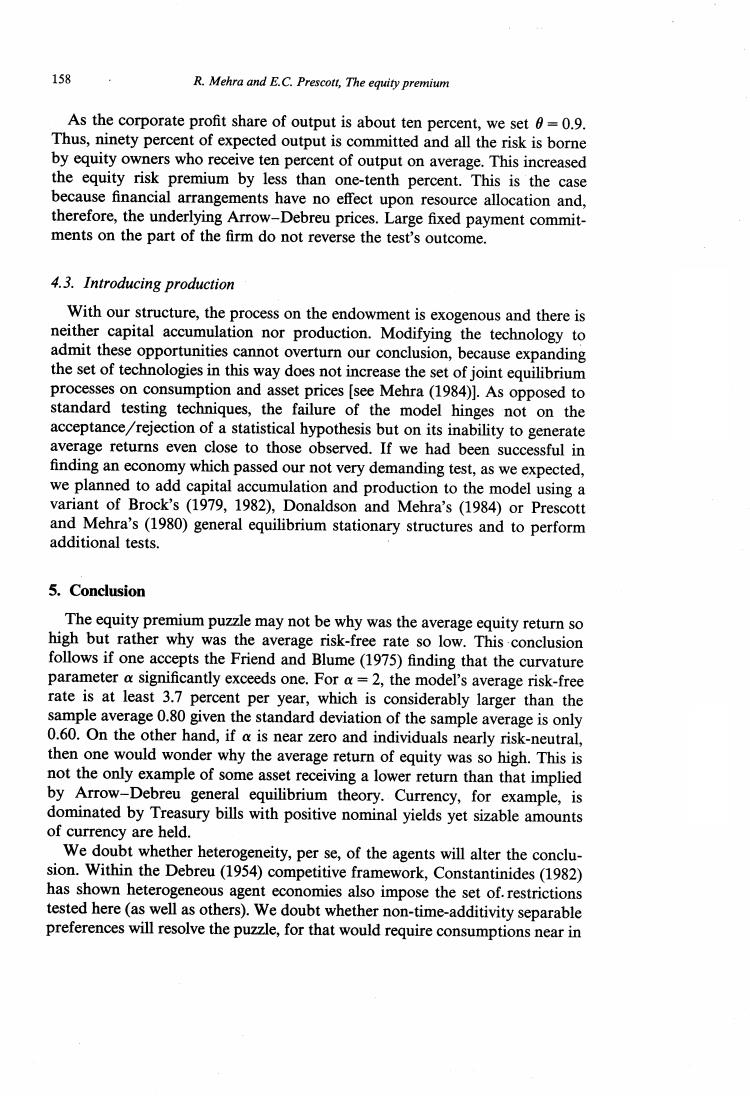正在加载图片...

158 R.Mehra and E.C.Prescott,The equity premium As the corporate profit share of output is about ten percent,we set 6=0.9. Thus,ninety percent of expected output is committed and all the risk is borne by equity owners who receive ten percent of output on average.This increased the equity risk premium by less than one-tenth percent.This is the case because financial arrangements have no effect upon resource allocation and, therefore,the underlying Arrow-Debreu prices.Large fixed payment commit- ments on the part of the firm do not reverse the test's outcome. 4.3.Introducing production With our structure,the process on the endowment is exogenous and there is neither capital accumulation nor production.Modifying the technology to admit these opportunities cannot overturn our conclusion,because expanding the set of technologies in this way does not increase the set of joint equilibrium processes on consumption and asset prices [see Mehra(1984)].As opposed to standard testing techniques,the failure of the model hinges not on the acceptance rejection of a statistical hypothesis but on its inability to generate average returns even close to those observed.If we had been successful in finding an economy which passed our not very demanding test,as we expected, we planned to add capital accumulation and production to the model using a variant of Brock's (1979,1982),Donaldson and Mehra's (1984)or Prescott and Mehra's(1980)general equilibrium stationary structures and to perform additional tests. 5.Conclusion The equity premium puzzle may not be why was the average equity return so high but rather why was the average risk-free rate so low.This conclusion follows if one accepts the Friend and Blume(1975)finding that the curvature parameter a significantly exceeds one.For a =2,the model's average risk-free rate is at least 3.7 percent per year,which is considerably larger than the sample average 0.80 given the standard deviation of the sample average is only 0.60.On the other hand,if a is near zero and individuals nearly risk-neutral, then one would wonder why the average return of equity was so high.This is not the only example of some asset receiving a lower return than that implied by Arrow-Debreu general equilibrium theory.Currency,for example,is dominated by Treasury bills with positive nominal yields yet sizable amounts of currency are held. We doubt whether heterogeneity,per se,of the agents will alter the conclu- sion.Within the Debreu (1954)competitive framework,Constantinides(1982) has shown heterogeneous agent economies also impose the set of.restrictions tested here (as well as others).We doubt whether non-time-additivity separable preferences will resolve the puzzle,for that would require consumptions near in